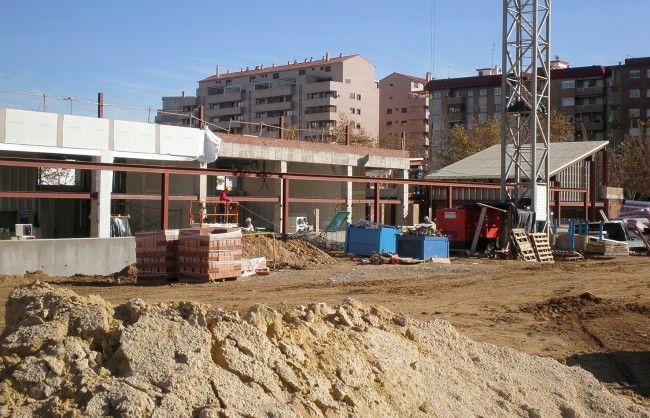One of the key objectives in the courses concerned with construction at our architecture school is to give students a level of knowledge that is sufficient to analyze the systems that were utilized in the construction of buildings, and to reflect on these.
An important part of the teaching method at our school is to visit buildings that are under construction. This kind of activities allows us to both show to our students how the knowledge they acquired during the academic year is used in reality, and to open a critical-constructive debate on the systems that are used and on their adequacy. This has been the goal for today. We put on our helmets and visited the construction site of an elementary school in Valencia. José Luis Gisbert Elio, one of the leading architects in the project, guided us around the construction site.
We entered the interior of the building in the company of architect Gisbert, and inspected the construction systems our students had previously seen in class. These systems include, among others, more traditional ones, such as subfloors made out of Zinc, and more modern ones, such as those used in the construction of façades and in interior decoration, two situations in which non-load bearing walls and façade works are common.
Students of the third year sometimes have difficulty in understanding the composition, behavior and execution of these heterogeneous solutions, which are increasingly more important in construction works. That is why it is very interesting they visit construction sites where these types of work are being carried out.
A very important aspect for students of architecture in order to understand the importance of taking into account the various disciplines the project consists of, such as structure, installation or construction. In this regard, the visit to the construction site enabled our students to understand, firstly, the coexistence between the structural system that was used, the installations and constructive systems, and, secondly, the difficulty level of the project, and the way in which problems were resolved.
We thank architect Gisbert for the spontaneous way in which we could speak with him about the project, for his explanations on the intentions and strategies he bears in mind during construction, and for sharing with us the experience he has with regard to the difficulties that arise in the process between an immaterial project and a finished building.
Pedro Verdejo. Professor

































